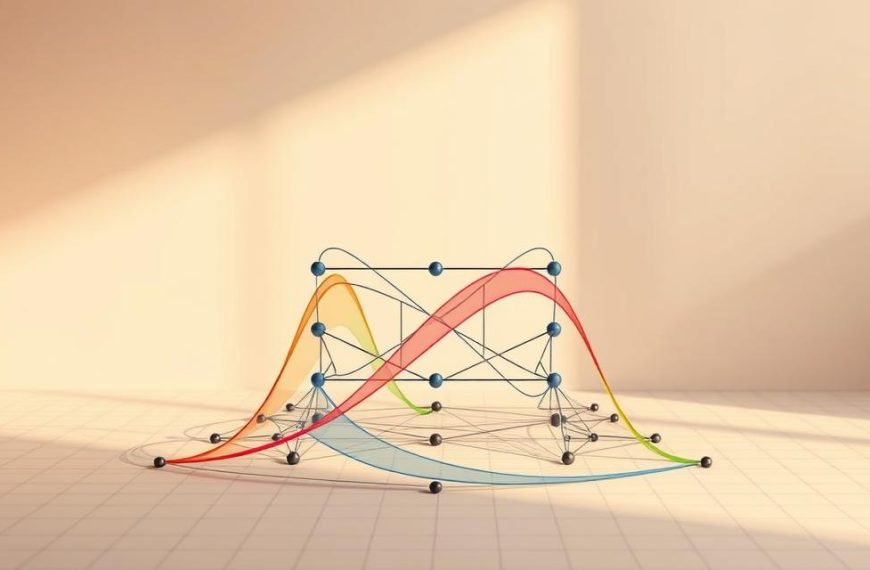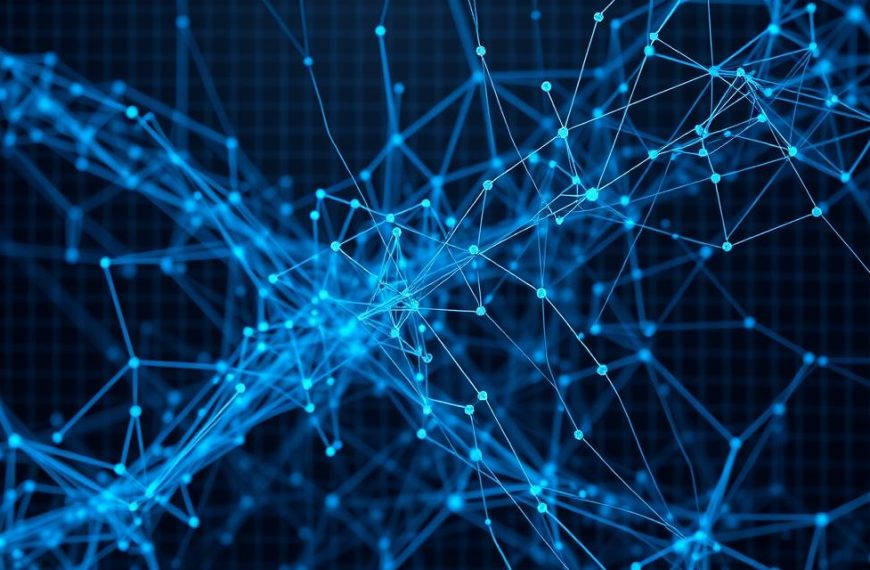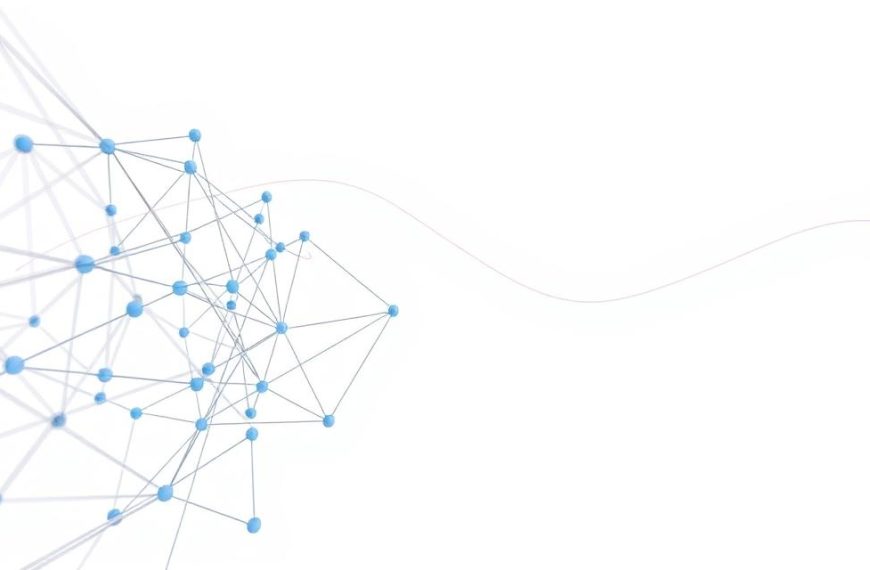Modern artificial intelligence relies heavily on computational systems that mimic human learning processes. At its core lies the neural network, a framework inspired by biological brain structures. These systems analyse data patterns through layered algorithms, adapting their behaviour based on exposure to information.
The evolution of training neural networks represents a landmark achievement in computer science. Early attempts in the 1950s faced hardware limitations, but today’s advancements enable complex model development. Applications span from medical diagnostics to self-driving vehicles, demonstrating their transformative potential.
This guide explores foundational principles behind machine learning architectures. We examine how iterative refinement processes enhance pattern recognition capabilities. Historical context shows the shift from theoretical concepts to practical implementations that power modern AI solutions.
Readers will discover optimisation strategies for improving model accuracy while avoiding common pitfalls. The content balances technical explanations with real-world examples, ensuring accessibility for newcomers. Subsequent sections build progressively, from basic operations to advanced training methodologies.
Introduction to Neural Network Training
Traditional software relies on rigid instructions, but machine learning flips this paradigm. Systems develop problem-solving abilities through exposure to examples rather than pre-defined rules. This data-driven approach forms the backbone of modern AI systems.
Core Principles of Supervised Learning
In supervised learning, models analyse labelled datasets to identify input-output relationships. Consider a darts player refining their aim: initial throws may miss the board completely, but adjustments based on results gradually improve accuracy. Similarly, neural networks modify their internal parameters through exposure to training data.
The Necessity of Systematic Training
Untrained networks resemble random number generators – capable of producing outputs, but without meaningful patterns. Effective training enables these systems to:
| Aspect | Untrained Model | Trained Model |
|---|---|---|
| Accuracy | Random guesses | Pattern-based predictions |
| Adaptability | Fixed behaviour | Data-responsive adjustments |
| Practical Use | Theoretical construct | Real-world applications |
This transformation occurs through iterative optimisation processes. Models learn to generalise from historical data, enabling predictions on new information. The training phase converts theoretical architectures into practical tools for complex decision-making tasks.
Fundamentals of Neural Networks
Data flows through neural networks in a series of steps, each layer applying specific computations to extract patterns. These architectures use vectors – mathematical constructs stored as arrays in Python – to process information systematically. Every layer receives input from its predecessor, transforming values through weighted connections and bias adjustments.
Understanding Layers and Weights
Weights act as dials controlling signal strength between neurons. Initialised randomly, these parameters evolve during training to amplify or dampen specific features. Bias vectors work alongside weights, allowing networks to detect patterns even when inputs approach zero values.
Consider a simple network analysing house prices. The first layer might process square footage, while subsequent layers combine this with bedroom count and location data. Each transformation involves:
- Matrix multiplications between inputs and weights
- Addition of bias terms
- Application of activation functions
The Role of Activation Functions
Non-linear functions like ReLU or sigmoid determine whether neurons fire signals forward. Without these components, networks could only model straight-line relationships. The right function choice impacts:
| Function Type | Behaviour | Common Use |
|---|---|---|
| Sigmoid | Squashes values to 0-1 range | Binary classification |
| ReLU | Returns positive inputs unchanged | Hidden layers |
| Tanh | Outputs between -1 and 1 | RNN architectures |
These elements combine to create hierarchical feature extraction. Through layered operations, networks progressively refine raw data into actionable insights, mimicking human decision-making processes at scale.
The Challenges of High-Dimensional Parameter Spaces
Modern machine learning systems face a formidable problem when scaling their architectures. Even modest neural networks contain thousands of interdependent variables, creating mathematical labyrinths that defy conventional search methods.
The Curse of Dimensionality
Consider a network analysing handwritten digits with:
- 784 input neurons (28×28 pixel grid)
- 15 hidden layer neurons
- 10 output classifications
This structure produces 11,935 adjustable parameters – weights and biases determining its behaviour. Testing all combinations would require 1011,935 attempts. For perspective, the observable universe contains roughly 1080 atoms.
Three critical issues emerge:
- Adjusting one weight affects multiple subsequent layers
- Loss landscapes develop intricate peaks/valleys
- Exponential growth in possible configurations
Traditional optimisation becomes impossible at this scale. Random guessing resembles “finding a specific grain of sand across every beach on Earth” – theoretically possible, but practically unachievable. This reality forces developers to employ gradient-based strategies that intelligently navigate parameter spaces rather than brute-force approaches.
Exploring the Loss Function and Its Importance
Every machine learning model’s success hinges on its ability to quantify mistakes. Enter the loss function – a mathematical compass guiding systems towards accuracy. This critical tool measures the gap between predictions and reality, transforming abstract errors into actionable numbers.
- Mean squared error: Ideal for regression tasks
- Cross-entropy: Optimises classification models
- Huber loss: Balances robustness and precision
These functions serve dual purposes. Primary terms calculate prediction inaccuracies, while regularisation components prevent overfitting. Consider this comparison:
| Component | Purpose | Impact |
|---|---|---|
| Error term | Measures deviation | Direct accuracy improvement |
| Regularisation | Controls complexity | Enhances generalisation |
The choice of loss function directly shapes a model’s learning trajectory. As explained in this comprehensive loss functions guide, different objectives demand tailored mathematical approaches. A well-chosen metric creates navigable optimisation landscapes for gradient algorithms.
Minimising loss isn’t mere number-crunching – it’s the essence of machine learning efficiency. Lower values correlate with improved performance, making this process fundamental to developing practical AI solutions.
Demonstrating Mean Squared Error in Action
Quantifying prediction accuracy becomes tangible through mean squared error. This fundamental metric measures average squared differences between predicted and actual values. Its bowl-shaped graph provides visual clarity for optimisation processes.
Interpreting the MSE Graph
The formula MSE = (1/n) Σ(yi – f(xi))² achieves two critical effects. Squaring eliminates negative values while amplifying larger errors. This creates a convex landscape where gradient descent algorithms find clear paths to optimal solutions.
Three key characteristics define MSE’s behaviour:
- Steeper slopes indicate significant parameter adjustments needed
- Global minimum exists at the bowl’s lowest point
- Symmetrical gradients enable efficient computation
While effective for regression tasks, MSE’s sensitivity to outliers warrants caution. A single extreme value disproportionately affects the loss function. This makes alternative metrics preferable for noisy datasets.
The visual bowl shape simplifies complex mathematical concepts. Practitioners use 2D plots to illustrate parameter adjustments, while 3D visualisations demonstrate multi-variable interactions. These representations form the basis for understanding higher-dimensional optimisation in advanced models.
Intuitive Comparisons with Real-World Analogies
Understanding complex algorithms becomes simpler when anchored in everyday experiences. Physical scenarios often mirror mathematical processes, offering tangible insights into abstract concepts.
The Mountain Climber Analogy
Picture navigating a mountain slope at night with limited torchlight. Each cautious step mirrors how gradient descent explores parameter spaces:
- Assess slope steepness in immediate vicinity (calculate gradients)
- Choose descending direction with maximum incline (negative gradient)
- Adjust stride length based on terrain (learning rate)
This process repeats until reaching base camp (global minimum). The torch’s limited beam represents local gradient visibility – systems only perceive immediate surroundings rather than entire landscapes.
Three critical parallels emerge:
- Momentum helps traverse small valleys (local minima avoidance)
- Oversized steps risk missing optimal paths (learning rate tuning)
- Persistent fog obscures safe routes (vanishing gradients)
Advanced techniques like Adam optimisation incorporate historical movement data, akin to a climber remembering previous footholds. These methods accelerate convergence while preventing oscillations around ideal points.
While simplified, this analogy clarifies why machine learning relies on iterative refinement rather than instant solutions. Each measured step in the dark ultimately illuminates the way forward for intelligent systems.
Random Guesses and the Need for Efficient Methods
Imagine trying to find a specific book in the British Library without a catalogue system. Random shelf-checking might work for small collections, but becomes laughably impractical at scale. This mirrors the problem with brute-force approaches in machine learning – what functions for toy examples collapses under real-world demands.
Basic networks with 50 parameters present 1050 possible configurations. Testing each would require more calculations than stars in our galaxy. Modern architectures often contain millions of weights, making exhaustive search as feasible as counting every grain of sand on Earth.
Three critical flaws emerge in random strategies:
- Exponential growth in computation time
- No guarantee of finding optimal solutions
- Wasted resources on duplicate configurations
| Approach | 10-Parameter Model | 10,000-Parameter Model |
|---|---|---|
| Possible Combinations | 1010 | 1010,000 |
| Feasibility | Manageable | Impossible |
This reality forces developers towards smarter algorithms. Gradient descent offers a way to navigate high-dimensional spaces efficiently, using mathematical slopes rather than random leaps. Instead of testing every possibility, it systematically follows error-reduction paths.
The problem of scale isn’t just technical – it’s fundamental to why machine learning required paradigm shifts in optimisation. What began as academic curiosity now demands industrial-strength solutions, paving the way for modern gradient descent techniques.
Gradient Descent as a Key Training Method
Mathematical optimisation faced a critical roadblock before gradient descent emerged. Early approaches resembled navigating London’s Underground without a map – possible, but painfully inefficient. This algorithm revolutionised parameter adjustment by replacing random exploration with calculated direction.
The core formula w(i+1) = w(i) – g(i)η(i) embodies elegant simplicity. Each term plays a distinct role:
- w(i): Current parameter values
- g(i): Gradient indicating adjustment direction
- η(i): Learning rate controlling step size
From Brute Force to Intelligent Optimisation
Imagine hiking down a foggy mountain using only slope steepness as guidance. Gradient descent operates similarly, making small steps towards lower error regions. Unlike random search, it uses derivative data to choose:
- Optimal descent direction
- Appropriate movement magnitude
- Continuous improvement pathways
First-order methods prioritise computational efficiency by focusing solely on gradient calculations. This approach avoids complex second-derivative matrices that strain processing resources. The result? Practical solutions for high-dimensional systems that would otherwise remain unsolvable.
Modern implementations balance speed with precision through learning rate adjustments. Too large, and systems overshoot optimal points. Too small, and progress stagnates. This delicate tuning underpins successful model training across industries.
How do you train a neural network?
Mastering neural systems requires methodical refinement through mathematical optimisation. The procedure follows a four-phase cycle: feeding input data, generating predictions, evaluating deviations, and adjusting internal weights. This iterative approach transforms chaotic initial states into precise predictive engines.
Gradient Descent Mechanics
Gradient descent serves as the backbone of parameter adjustment. By calculating partial derivatives across each layer, systems identify which weights require modification. The algorithm moves incrementally towards optimal configurations, like a ship’s captain making minor course corrections during a voyage.
Precision in Parameter Updates
Each training step involves:
- Forward-pass computations through network layers
- Loss comparison against ground truth values
- Backward propagation of error gradients
- Weight updates using calculated derivatives
Learning rate selection proves critical – excessive adjustments cause overshooting, while timid steps prolong convergence. Modern implementations automate this balance through adaptive scaling techniques.
Effective training demands careful monitoring of loss curves and validation metrics. Practitioners must guard against overfitting through regularisation strategies while ensuring sufficient data exposure. When executed properly, these methods yield models capable of sophisticated pattern recognition across diverse applications.




















